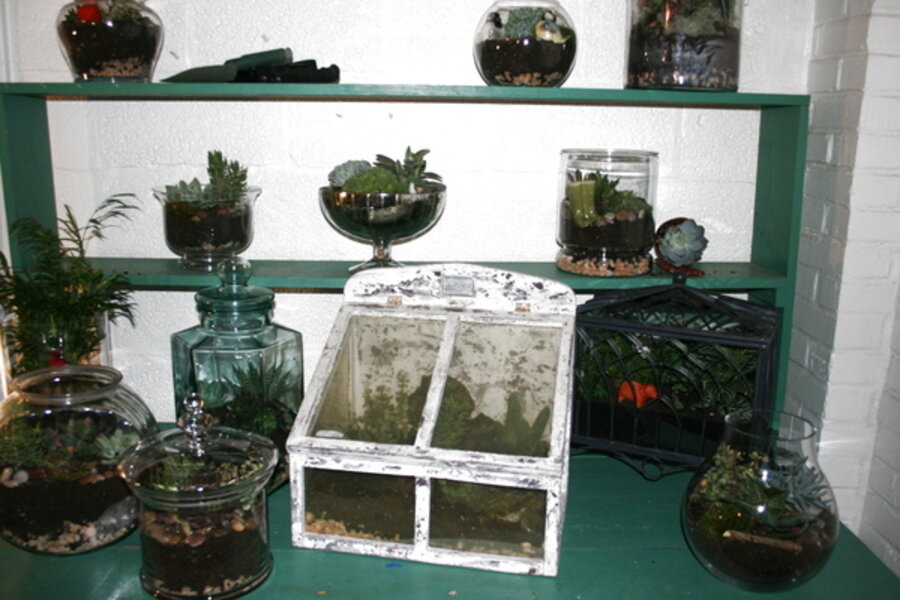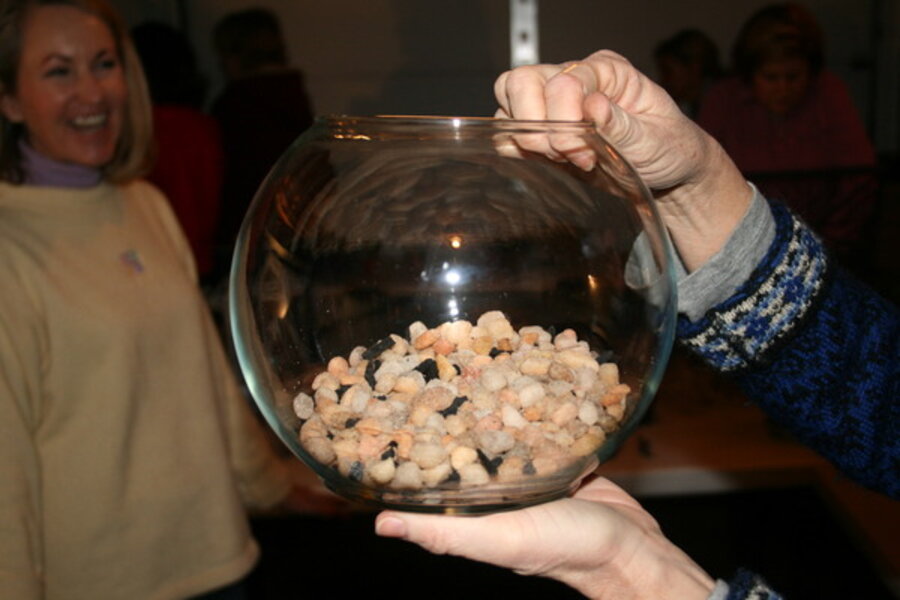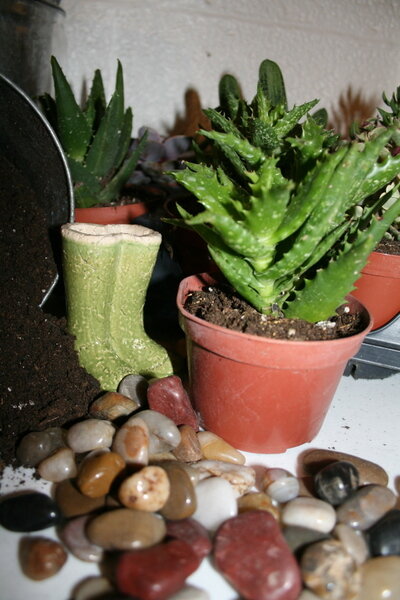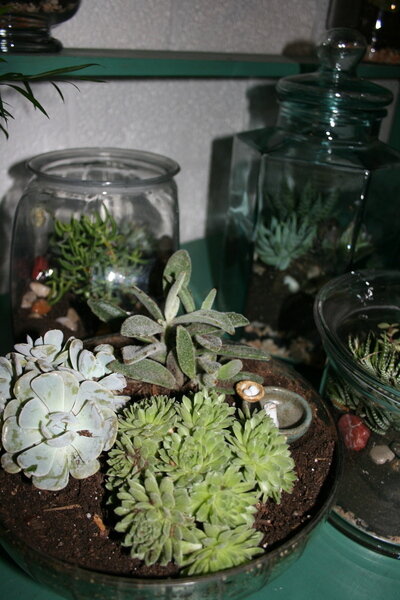Make a terrarium
Loading...
For most of us, spring can’t come early enough. A few faux springlike days, and we just want to get out there and plant. But we all know that this is a no-no. More cold is yet to come. But you can begin digging in the dirt anytime by making a terrarium.
More specifically, a "new" terrarium, as they are so nicely illustrated in Tovah Martin’s book, "The New Terrarium: Creating Beautiful Displays for Plants and Nature." .
Tovah’s book gives plenty of ideas to get you digging. The new terrarium concept has been expanded to basically include any glass vessel, opened or closed.
As this year’s program chair for my “girlfriend” garden club in Raleigh, N.C., the Bloomsbury Garden Club, I slated programs for each month we meet. Tovah’s book was inspiration for one of our programs.
Our garden club is made up of 18 friends who plan to stay together for a long time. As Carmen Honeycutt, of Carmen Honeycutt Interior Design, puts it: “ We are friends with whom we are raising our children and will raise our grandchildren, and we all share the love of gardening.”
The garden club is about 15 years old; I’m one of the newbies to the group, having only been a member for eight years.
For our program on terrariums, we asked each member to bring her own container, and the club provided the rest of what was needed -- gravel, activated carbon, potting soil, and plants.
I also picked up a few accents to add to the designs, such as birds, Wellies, bunnies, birdhouses, and the like.
Here’s a tip -- Christmas ornaments make ideal accents, as do things found in nature: a shell, a rock, a stick, a feather, some bark.
Decide the terrarium's location
If you plan to do this with a group, it’s a good idea to find out in advance where they will be using their terrariums -- in high light or low light. Succulents work wonderfully in the new terrarium designs, but you’ll need high light for them.
As it turned out, most of our members had a high light location for their designs, so we went with succulents. Oh my, I just have to tell you, succulents are fun to work with!
It was a wonderful group project, with plenty of chatter and laughter, and we all went home with a new terrarium that we were proud of.
So, if you are jazzed to dig in the dirt, invite a group of friends to share in the fun, and it will become a memorable event with new terrariums for everyone to take home.
How to make a 'new' terrarium
1) Invite friends over or make one on your own.
2) Ask friends to bring a terrarium (glass container), either opened or closed, to build their design.
3) Gather Supplies -- our quantities were based on 14 friends making terrariums:
- Gravel -- 60-pound bag
- Activated Carbon
- Potting soil -- 3 cubic yards
- Plants -- we allowed for 3 plants per person
4) Play with your design before adding anything to the container. This dry run will allow you to see how best to place your plants and accents; and to make sure the scale and height are right.
5) Mix the activated carbon with the gravel and then rinse. Activated carbon needs to be in contact with the water to be effective. Therefore, it’s better to mix the carbon and gravel together rather than layering the activated carbon on top of the gravel.
6) Add potting soil on top of the gravel/carbon mixture, deep enough to cover the plant’s root ball.
7) Make a well in the soil and add each plant. Cover root ball.
8) Water lightly and place in a bright location, but not in direct sunlight.
Editor's note: To see more, click on the arrows at the base of the top and left photos.
-----
Helen Yoest lives in North Carolina and writes about Gardening With Confidence. She's a garden writer, speaker, and garden coach. She's also a field editor for Better Homes and Gardens and Country Gardens magazines and serves on the board of advisors for the JC Raulston Arboretum. You can follow Helen on Twitter and Facebook. To read more by Helen at Diggin' It, click here.








